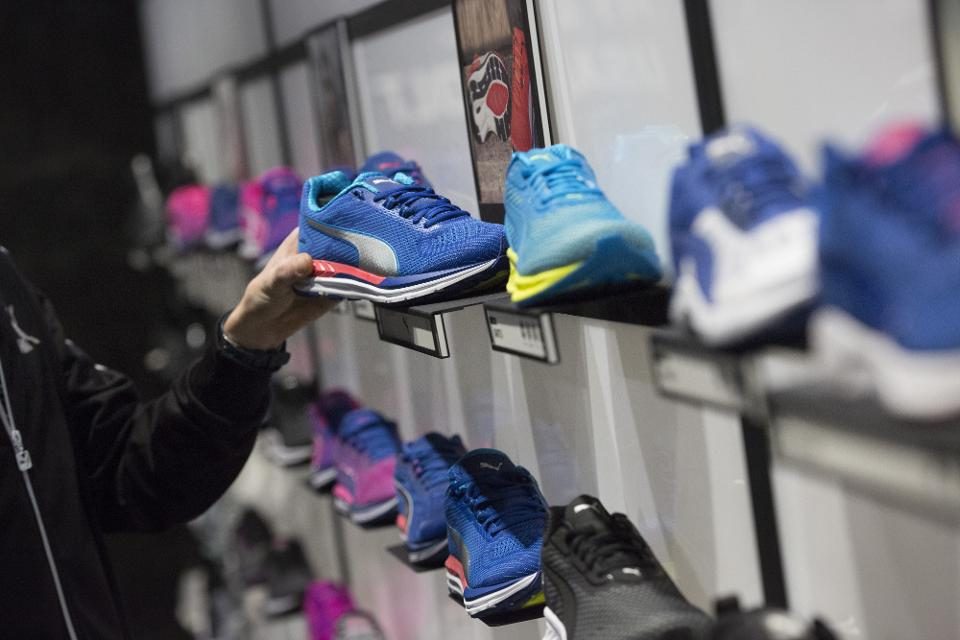Sport leisure shoes next year will overtake fashion shoes as the largest U.S. shoe category, a study … [+]
© 2017 BLOOMBERG FINANCE LP
Andria Cheng Source: www.forbes.com, September 2019
The athleisure trend is getting even more mainstream, as “sport leisure” footwear is about to surpass dressier fashion shoes as the largest U.S. footwear category come next year.
U.S. sales of sport leisure footwear, including athletic-inspired casual sneakers and skate shoes, rose 7% in the 12 months through August, according to a study by market research firm NPD Group, released Thursday. In contrast, high heels and other fashion styles declined 5% while technical performance footwear sales fell 7%.
Athleisure will lead the U.S. shoe sales growth through 2021, according to NPD.
“More brands will effectively respond to the shift away from performance and fashion footwear to focus on what has become the new norm: athleisure footwear,” Matt Powell, NPD’s senior sports industry advisor, said in the study. “Consumers are looking for shoes that are less technical and instead more versatile and every day.”
The fashion category’s eventual rebound will also depend on answering the athleisure need. NPD projects the category will decline through next year but rise slightly in 2021, thanks to the growth of “comfort-oriented silhouettes” like slides, slippers and loafers while heels will be “active-inspired” and trend “lower and thicker” with added comfort features.
The shift isn’t restricted to shoes. A separate NPD study in August showed the number of women who shopped or bought a sports bra has grown to 45% in 2018 from 38% in 2015. “The perception that a bra ‘is sexy’ is much less important,” the study said.
That change in consumer perception also helps explain the broader challenges facing the top U.S. lingerie brand Victoria’s Secret, known for its sexy, glamorized look.
The dictionary-defined athleisure trend has led not only to the introduction of workout-geared makeup like Clinique Fit, it’s also fueled the continued growth of companies like Nike and Lululemon that are doubling down on consumers’ increased health and wellness pursuits. Major retailers from Amazon to Target also have rolled out their own athleisure lines.
Nike CEO Mark Parker said this week the company is “broadening its definition of sport” to light activity and play from competition sports and fitness exercises.
“The adoption of athleisure trend is here to stay and going to accelerate,” said Adam Goldenberg, CEO of Los Angeles-based TechStyle Fashion Group, in a recent interview. It’s about “being more comfortable. There’s a trend toward wellness. We couldn’t sell leggings in France three years ago. But now it starts to pick up.”
TechStyle is the parent of brands including the Fabletics activewear subscription line, which was cofounded by actress Kate Hudson.
According to an RBC Capital Markets’ U.S. back-to-school sporting goods survey released this month, three-fifths of respondents said they use sporting goods for athleisure reasons while just 30% said they use them only for sports activities. “Athleisure popularity remains robust,” RBC analyst Piral Dadhania said in a note.
The global athleisure market will rise 9% this year, outpacing the total clothing and footwear market beyond 2023, according to data and analytics firm GlobalData in an August report. Its study showed more than two-thirds of consumers wore the sport clothing they bought both for exercise and for eating out or shopping.
“Consumer desire for a multifunctional wardrobe (is) set to drive the athleisure market,” the report said.

